Kayaking is a thrilling activity that lets you explore nature’s wonders while experiencing an exhilarating ride. But do you know about the potential dangers that come with it?
Similar to other outdoor adventures, kayaking carries its own set of dangers. One of the most common hazards in kayaking is capsizing.
Imagine the sudden flip of your kayak, plunging you into the water. This can quickly escalate into a life-threatening situation.
Afterward, it can lead to dangerous conditions such as drowning, hypothermia, and shock.
Yet, there’s more to the story. Accidents have a knack for catching us off guard, striking when we least expect them. Although the accidents are relatively rare compared to other outdoor activities, they are still real and can be deadly if you’re not careful.
That’s why it’s crucial to deeply understand the potential kayaking dangers to ensure safety on the water.
But don’t let the thrills be your fuel!
Ronin D. Sullivan
Contents
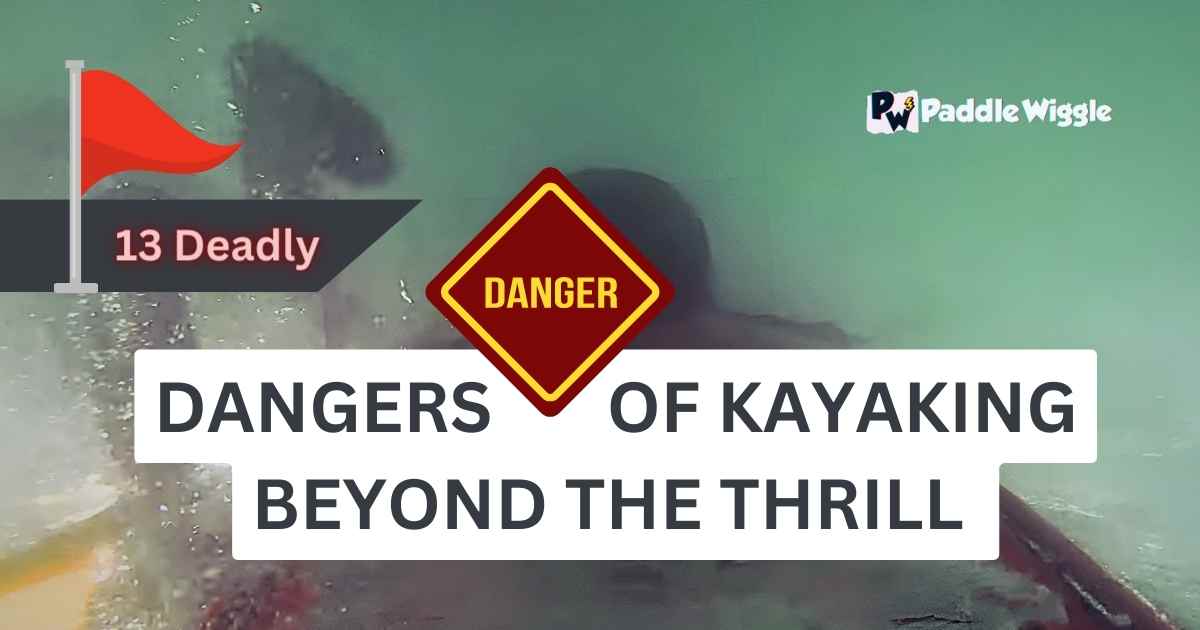

The 13 Deadly Dangers Of Kayaking
Let’s have a look at these dangers first:
- Capsizing and Drowning
- Hypothermia
- Strainers and Underwater Obstacles
- Fast-Flowing Rivers and Whitewater Rapids
- Treacherous Weather Conditions
- Rock or Cliff Collisions
- Aggressive Wildlife
- Inattentive or Reckless Boaters
- Dehydration and Sun Exposure (it can be serious for unplanned or sudden longer trips)
- Flash Floods
- Strong Offshore Winds
- Trapped in Remote Areas
- Dam Releases
Capsizing and Drowning


Capsizing and drowning are well-known dangers in kayaking. It happens when a kayak overturns, causing the paddler to fall into the water.
Scary, right? One reason this can happen is when you lose your balance.
If you lean too much to one side or make sudden, uncontrolled moves, your kayak can become unstable and tip over. Other things like strong currents, big waves, or hitting things under the water can also make your kayak flip over.
To make sure you don’t capsize and drown, you need to remember a few important things. First, always try to keep your balance. And keep your body in the middle of the kayak and distribute your weight evenly.
This will help your kayak stay stable and not tip over. Pay attention to how you move and try not to make sudden changes that could upset the balance of your kayak.
But don’t worry too much if you do capsize!
It happens to many kayakers. If it does happen, stay calm and act quickly. The first thing you should do is try to rescue yourself. Then, upright your kayak and get back in.
Remember, it’s important to know what to do if you capsize, but try to prevent it from happening by staying balanced and being careful.
Hypothermia
Hypothermia is another big risk associated with kayaking.
It can get really cold out there on the water! Hypothermia is when your body gets too cold, and it can make you feel really sick.
When you’re in cold water, your body loses heat quickly, especially if you get wet or if it’s windy.
But how can you tell if you’re getting too cold?
Look out for signs like feeling very cold, shivering, tired, or having trouble moving or thinking clearly. These signs may mean you’re experiencing hypothermia.
It’s important to recognize these signs because hypothermia can be dangerous and even life-threatening if it is not treated.
To ensure you stay warm and safe while kayaking, you can do a few things. First, dress appropriately for kayaking in cold conditions. Wear layers of warm clothing like sweaters or jackets made of materials that can keep the heat in, such as fleece or wool.
And don’t forget to wear a waterproof and windproof outer layer to stay dry and protect yourself from the cold water.
Another important tip is to wear a life jacket. Not only does it keep you safe in the water, but it also helps to keep some of your body heat inside.
If you notice any signs of hypothermia or feel too cold, immediately take action. Find a warm place to go, whether it’s getting back to land or finding shelter on the water. If you’re with others, let them know about your condition so they can help you.
Stay warm and prevent hypothermia are crucial when kayaking in cold waters. Dress properly, know the signs of hypothermia, and seek warmth when needed. By taking these precautions, you can enjoy kayaking while staying safe and having a great time on the water.
Strainers and Underwater Obstacles


Strainers and underwater obstacles can be like sneaky traps in the water.
These can be big tree branches, logs, or partially submerged debris in the water. It’s Understanding these hazards and how to avoid them is important to stay safe on your kayaking adventures.
Strainers and underwater obstacles can be dangerous because they trap or entangle kayakers. Imagine kayaking down a river and encountering a fallen tree with branches stretching into the water. If you get too close and your kayak gets caught in the branches, it can create a dangerous situation. The water can push against you while the branches hold you in place, making it difficult to escape.
So how do you handle strainers and underwater obstacles while kayaking?
To prevent getting trapped or entangled, it’s scouting the water ahead and looking for potential obstacles is essential. Keep an eye out for fallen trees, branches, rocks, or other objects that could pose a risk. By being vigilant and observant, you can spot these hazards early and plan your route accordingly.
When you encounter a strainer or underwater obstacle, it’s crucial to navigate it safely. Avoid paddling directly into it or trying to go over it, as this can increase the risk of getting trapped. Instead, steer your kayak to the side and find an alternate path.
If necessary, you may need to portage your kayak, which means carrying it around the obstacle on land until it’s safe to continue paddling.
It’s also important to communicate with your fellow kayakers. Let them know about the obstacle so they can also navigate it. Together, you can help each other stay safe and avoid potential entanglements.
Fast-Flowing Rivers and Whitewater Rapids
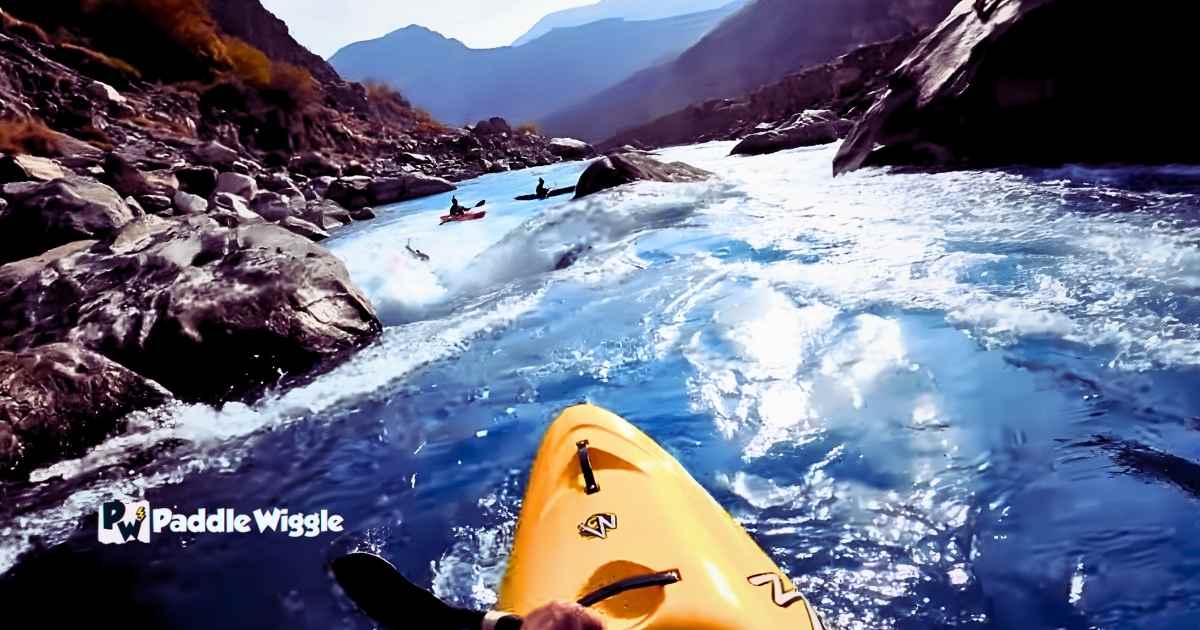

There are some extra exciting fast-flowing rivers and whitewater rapids. Sometimes, they are unpredictable. So it’s important to understand that they can also be challenging and have some risks.
Let’s explore what makes them tricky and how to handle them safely.
The first challenge is the speedy and unpredictable water. These rivers have strong currents, making it hard to control your kayak. Rocks and drops in the water can make things even trickier.
One big risk is being carried away by the fast current or getting stuck against rocks. The powerful water can sweep you downstream, making it tough to stay in control. If you get stuck against rocks, you might get trapped or tip over, which is dangerous.
You need the right skills and knowledge to tackle fast-flowing rivers and whitewater rapids. Make sure you learn how to read the water and understand river ratings, which tell you how difficult the rapids are. Start with easier sections if you’re new, and gradually move on to more challenging ones.
Wearing a life jacket that fits well is super important. It will help you float and stay safe if you tip over. Don’t forget to wear a helmet to protect your head from rocks.
Keep your eyes open and pay attention to the river’s flow. Try to predict what’s coming next. Use your paddle to help you balance and steer your kayak. Learning how to brace and roll can help you recover if you tip over.
If you’re not sure about your skills or feel unsure, it’s best to ask an experienced kayaker for help or join a guided trip. They can give you advice and keep an eye on you to make sure you stay safe.
Treacherous Weather Conditions
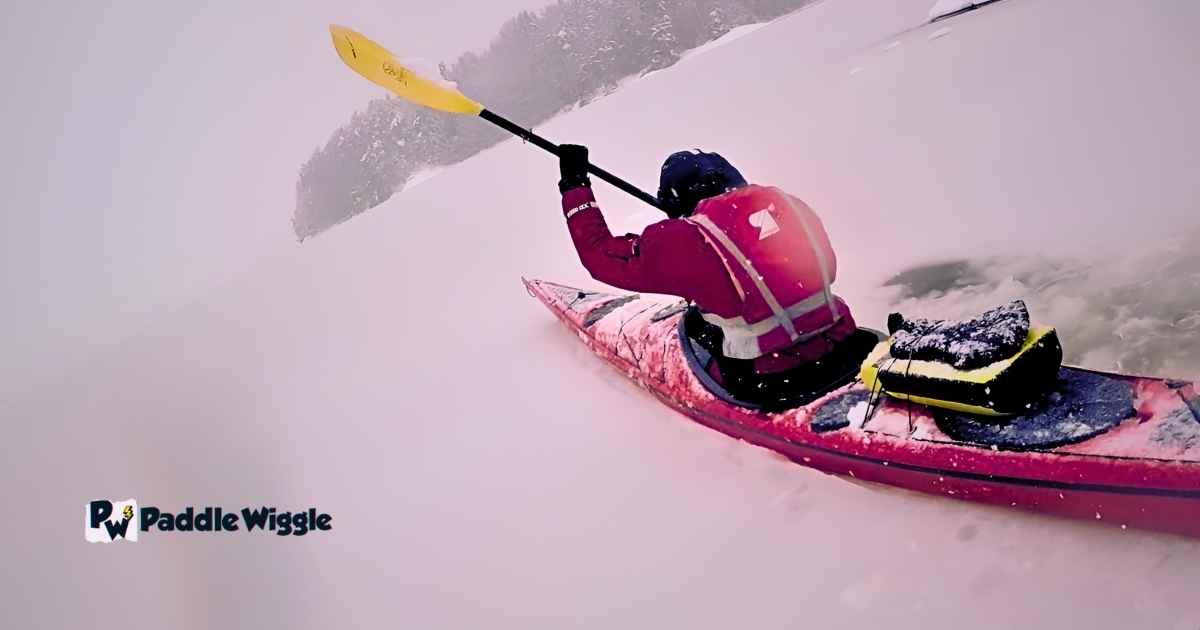

Weather is a powerful force that you need to be prepared for. Let’s talk about the different weather conditions that can be risky and how to handle them wisely.
Strong winds, thunderstorms, fog, and other weather conditions can make kayaking more challenging. When the wind blows really hard, it can push you off course and make paddling difficult. Thunderstorms can bring lightning, heavy rain, and strong gusts, which are not safe for kayaking.
And fog can make it hard to see where you’re going, increasing the chances of getting lost or colliding with obstacles.
Paddling in adverse weather can be dangerous. Reduced visibility due to rain, fog, or darkness makes it harder to see hazards like rocks or other boats. Winds can create big waves that can tip over your kayak. It’s important to stay safe and avoid unnecessary risks.
Before heading out, check the weather forecast. If it predicts bad weather, postponing your kayaking adventure for another day is best. Understanding weather patterns and knowing when conditions might change can help you plan your trip better.
Keep an eye on the sky and the water’s behavior when you’re on the water. Dark clouds, increasing wind, or sudden changes in temperature can be signs that the weather is about to worsen. If you notice these signs or hear thunder, it’s time to head back to shore and seek shelter.
Here are some tips for dealing with different weather conditions:
- Strong winds: Paddle close to the shore with a low, steady stroke. If the wind is too strong, it’s staying off the water is better.
- Thunderstorms: Get off the water immediately. Find a safe place on land, away from tall trees or open areas.
- Fog: If you encounter fog, paddle slowly and cautiously. Use a whistle or horn to let others know where you are.
Remember, your safety should always come first. Don’t be afraid to cancel your kayaking plans or seek shelter if the weather turns bad. Being prepared and making smart decisions will help keep you safe and ensure you have a great time kayaking.
Rock or Cliff Collisions
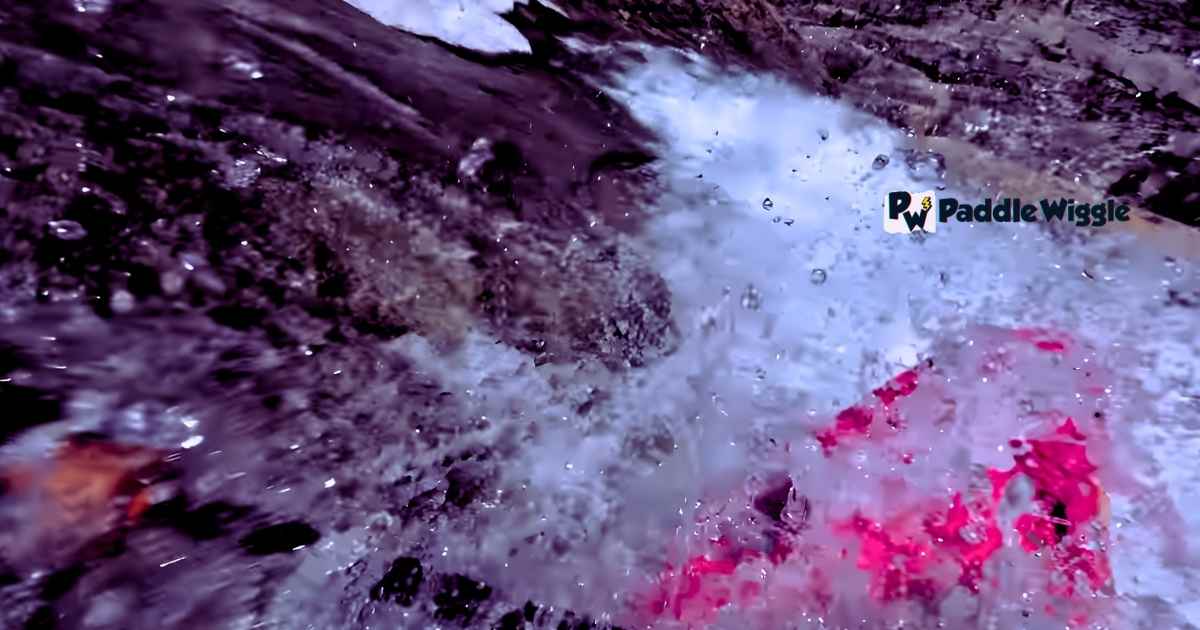

Hitting rocks or cliffs while kayaking can be painful. It can lead to serious injuries. Rocks lurking beneath the water’s surface can damage your kayak or cause it to overturn, putting you at risk of getting hurt.
Cliffs can pose a danger if you get too close and risk running into them. Understanding the risks and taking precautions to avoid such collisions is crucial.
Maintaining awareness of your surroundings is key. Keep a lookout for rocks or cliffs in the water ahead, and paddle with caution in areas where they are present. Watch out for submerged rocks that might not be visible from the surface. By staying alert, you can steer clear of these hazards and prevent accidents.
To navigate safely around rocks or cliffs, follow these tips:
Keep safe distance
Maintain a reasonable distance from rocky areas or cliffs. Avoid getting too close, as currents or waves can push you towards them unexpectedly.
Choose the right route
Plan your kayaking route carefully, taking note of any rocky areas or cliffs. Identify safer passages where you can paddle without the risk of colliding with these obstacles.
Stay focused and observant
Always pay attention to your surroundings while kayaking. Keep your eyes on the water ahead and look for any signs of rocks or cliffs. Be mindful of changes in the current or any hazards that may arise.
Aggressive Wildlife
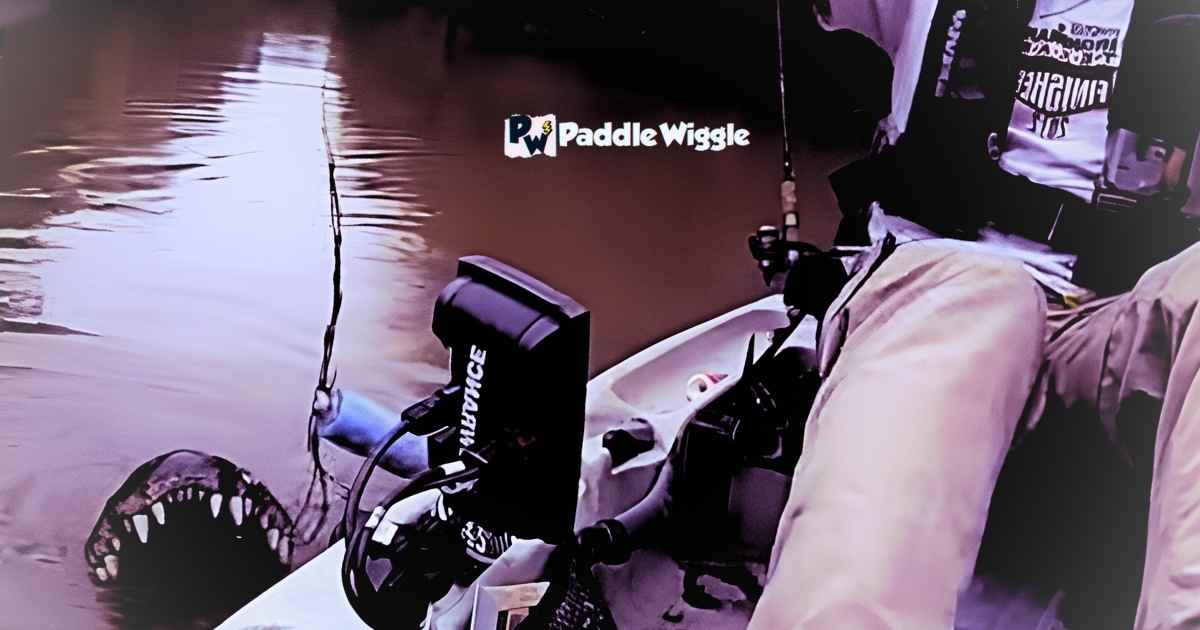

When you’re out kayaking, it’s not uncommon to encounter wildlife, such as marine animals or nesting alligators. While these encounters can be exciting, it’s essential to remember that wildlife should be respected and their habitats left undisturbed.
Let’s discuss how to safely observe wildlife and what to do in case of close encounters.
Respecting wildlife means keeping a safe distance and not approaching or disturbing them. It’s important to remember that wild animals have their own space and behaviors. By observing from afar, you can minimize stress for them and ensure their safety as well as your own.
Here are some tips for safely observing wildlife while kayaking:
Don’t get close
Keep a respectful distance from wildlife. Use binoculars or a zoom camera lens to get a closer look without getting too close physically. This allows you to observe their natural behavior without causing any harm or disturbance.
Stay calm and quiet
Avoid making sudden or loud noises that could startle the animals. You’ll have a better chance of observing them in their natural state by staying calm and quiet. Remember, you are a guest in their habitat.
Do not feed or touch the wildlife
Feeding or touching wildlife can disrupt their natural behavior and may even be dangerous. Never attempt to approach or feed any wild animals you encounter while kayaking.
Be aware of nesting areas
Many bird species nest along shorelines or on islands. These areas should be respected and avoided, especially during breeding seasons. Keep a safe distance to allow them to tend to their nests and raise their young without interference.
If you find yourself in a close encounter with wildlife while kayaking, follow these guidelines:
Give them space
If an animal comes near your kayak, slowly and gently paddle away without causing any disturbance. Giving them enough space is essential, and not attempting to interact with them.
Stay in your kayak
Never attempt to touch or handle wildlife, even if they appear docile or friendly. Remember, they are still wild animals and may react unpredictably if they feel threatened.
Inattentive or Reckless Boaters
Other boaters can be a risk, especially if you’re kayaking in areas with motorized boats. Some boaters may not pay attention or behave recklessly, which can put you at risk. Let’s learn about the dangers of collisions with inattentive or reckless boaters and how to stay safe.
Collisions with inattentive or reckless boaters can lead to accidents and injuries. These boaters may not be watching where they’re going or maybe speeding excessively, making it difficult for them to see you. It’s important to understand that not all boaters are aware of kayakers on the water, so it’s up to you to take precautions.
Here are some tips for staying safe and avoiding collisions with inattentive or reckless boaters:
Maintain situational awareness
Always be aware of your surroundings. Keep an eye out for other boats, especially larger ones that may have difficulty seeing smaller kayaks. Be vigilant, listen for engine sounds, and look for any signs of approaching watercraft.
Use bright and reflective gear
Wear bright-colored clothing and use reflective materials on your kayak or paddle. This helps make you more visible to other boaters, especially in low-light conditions or when visibility is reduced.
Signal your presence
Use a whistle or other audible device to alert nearby boaters of your presence, especially if they seem unaware. Loud and distinct sounds can help get their attention and prevent accidents.
Practice defensive kayaking
Assume that not all boaters can see you, even if you think they should. So, stay cautious and ready to take evasive action if needed. And always paddle defensively by maintaining a safe distance and avoiding areas with heavy boat traffic.
If you notice an approaching watercraft that seems inattentive or reckless, here’s what you can do:
Alter your course
If you see a boat heading towards you or acting in a way that could be dangerous, change your direction to avoid a potential collision. Give them plenty of space and stay clear of their path.
Make eye contact
If possible, make eye contact with the operator of the other boat to ensure they see you. A visual connection can help increase their awareness of your presence.
Be prepared to take evasive action
Have a plan in mind for quick maneuvers, such as paddling away from the approaching boat or turning sharply to avoid a collision. Always prioritize your safety and well-being.
Dehydration and Sun Exposure
Paddling for a long time can make us thirsty, and the sun can be really hot. On longer kayaking trips, dehydration, and sun exposure can be a problem.
It mostly happens when your body loses more water than it gets and can happen when you’re kayaking for a long time. Paddling under the hot sun and using up energy can make you sweat a lot and lose fluids from your body. This can make you feel tired, dizzy, and get muscle cramps. It can even lead to something called heat exhaustion or heatstroke, which is really serious.
Getting too much sun can also be bad for you. It can give you sunburn, damage your skin, and even cause problems like heat-related illnesses. The sun’s rays can be super strong when they bounce off the water, so it’s important to protect yourself.
To avoid getting dehydrated and having too much sun, here are some things you can do:
Pick the Best Time
Try to plan your kayaking trip during cooler times of the day, like early morning or late afternoon. This way, you’ll avoid the hottest sun and reduce the chances of getting sunburned or overheated.
Drink Plenty of Water
Make sure to drink lots of water before, during, and after your kayaking trip. Carry a good amount of water and take small sips regularly, even if you’re not thirsty.
Protect Yourself from the Sun
Wear sunscreen with a high sun protection factor (SPF) that’s meant for water activities. Put it on your skin before you start kayaking, and reapply it often. Cover up your skin with lightweight and loose clothing. Wearing a hat and sunglasses is a good idea too.
Take Breaks in the Shade
When you need a break, find a spot where you can cool down and rest. You can look for places with trees or rocks that provide shade. Use these breaks to drink water and give your body a rest.
Flash Floods


Flash floods are like surprise visits from tons of water. They can be scary!
But what are flash floods, actually? They’re sudden and powerful floods that happen when there’s a lot of rain in a short amount of time. These floods can be super risky because they cause water levels to rise quickly and create strong currents that can carry you away.
When you’re kayaking, and a flash flood occurs, it’s essential to understand the dangers and take the right actions to keep yourself safe.
Let’s learn more about the risks and how to respond if you find yourself in a flash flood situation.
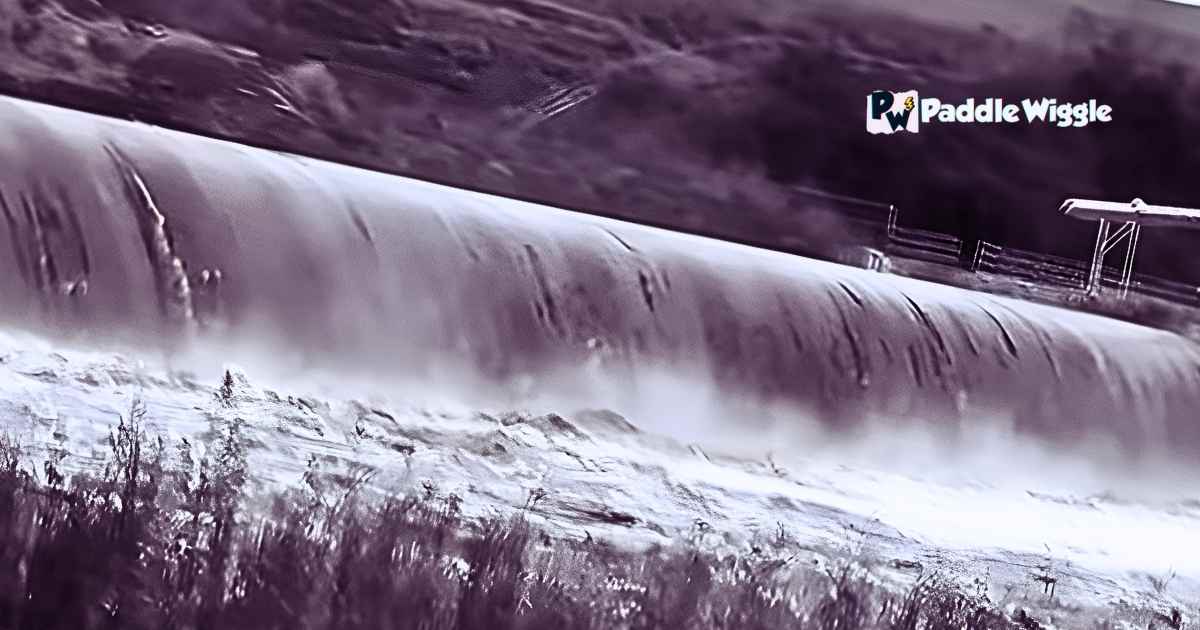

One of the biggest dangers of kayaking during a flash flood is the rapid rise of water levels. The water can go from calm to raging in no time, making it difficult to navigate and increasing the risk of capsizing. The strong currents can sweep you away, making it hard to control your kayak and potentially harm you.
So, it’s important to be aware of the weather conditions before you go kayaking. Keep an eye on weather forecasts and be cautious if there’s a chance of heavy rain. Also, avoid kayaking in areas known for flash floods, such as narrow canyons or low-lying areas prone to flooding. It’s better to postpone your trip to a safer time.
Strong Offshore Winds
Strong offshore winds can be quite risky when you’re kayaking in open water. But what exactly are offshore winds? They’re powerful winds that blow from the land towards the sea, making it tough to paddle against them.
Let’s explore more about the risks and how to stay safe if you encounter strong offshore winds during your kayaking trip.
One of the main dangers of strong offshore winds is the difficulty they pose while paddling. The wind pushes against you, making moving forward and controlling your kayak harder. It can be exhausting and frustrating, especially if you’re trying to reach a specific destination. These winds can also blow you off course, taking you farther away from where you want to go.
That’s why checking the weather conditions and wind forecasts before you set off is important. Pay attention to any warnings or advisories regarding strong offshore winds. If you notice that the winds are too strong or beyond your comfort level, it might be best to postpone your kayaking trip for another day when the conditions are more favorable.
If you find yourself kayaking in strong offshore winds, here are some tips to help you handle the situation safely:
Stay Close to the Shore
Paddle close to the shoreline where the effects of the wind are less pronounced. This will provide you with some protection and make it easier to navigate.
Adjust Your Route
If you’re the wind pushes you off course, adjust your route accordingly. Try to angle your kayak, so you’re paddling diagonally against the wind, which can help you maintain control and progress.
Seek Shelter
If the winds become too strong to handle or you feel unsafe, look for sheltered areas such as coves, bays, or protected inlets. These areas can offer respite from the strong winds and allow you to regroup and plan your next steps.
Use Your Paddle as a Sail
In certain situations, you can use your paddle to harness the power of the wind. By holding your paddle up and allowing the wind to catch it like a sail, you can use it to your advantage and help you move more easily.
Trapped in Remote Areas
When you go kayaking in faraway places, there you can get stuck without a way to get back easily. It’s important to know about this and be prepared. Let’s talk about the risks and how to stay safe if you ever find yourself stuck in a remote area while kayaking.
One big risk of being trapped far away is not being able to get help quickly. This might happen if something unexpected comes up or if you get lost. To avoid this, plan your trip carefully, and letting someone know about it is important.
And tell them where you’re going and when you plan to be back. If you don’t return on time, they can get help for you.
To lower the risks of being trapped, its having some safety items with you is good. These can be things like a waterproof phone, a whistle, or a device that can show your location to others. They can help you call for help or let people know where you are.
It’s also smart to bring extra food, water, and warm clothes if you stay longer than you planned.
Dam Releases
Dams are big structures that hold water, but sometimes they release much of it quickly. It can make the water super powerful and dangerous!
Let’s discuss the risks and what to do if you encounter a dam release while kayaking.
Dam releases happen when water is suddenly released from a dam, which can cause big changes in the water flow. This means the water can get rough and powerful, making it hard to control your kayak. The strong currents can be dangerous and pull you towards the dam.
Being caught in turbulent water is risky, and you could get into trouble if you’re not careful. To stay safe, checking the release schedules before going kayaking is crucial. If you know there will be a dam release, it’s best to avoid kayaking in that area until the water flow returns to normal.
If you find yourself near a dam release while kayaking, follow these tips to stay safe:
Paddle to the shore
Try to paddle towards the shore as quickly and safely as possible. The closer you are to the shore, the less impact the strong currents will have on your kayak. Once you’re near the shore, stay there until the water flow subsides.
Look for eddies
Eddies are calm areas of water behind obstacles like rocks or bends in the river. If you can find an eddy, paddle into it and wait until the water flow is calmer. Eddies can provide a temporary safe spot for you to rest and assess the situation.
Stay away from the dam
Never try to paddle towards the dam. The currents near the dam can be extremely strong and dangerous. Keep a safe distance from the dam and avoid getting too close.
How to Handle Sudden Dangers While Kayaking
As I mentioned before, dangers are not uncommon in kayaking. So, it’s always best to get prepared for that. That’s why it’s important to know how to handle any dangers that may come your way.
Stay Calm and Maintain Composure
It’s really important to stay calm when something unexpected happens. Take deep breaths and try to stay focused. Panicking can make things worse, so it’s best to keep a clear head.
Maintain Balance and Stability
If you encounter sudden waves, strong currents, or obstacles, it’s keeping your balance and staying stable in your kayak is crucial. Keep your body centered, and use your core muscles to help you stay upright.
Brace Yourself for Impact
Sometimes you might be heading toward a stationary object or a big wave. In such situations, it’s important to prepare yourself. Lower your center of gravity by crouching down a bit, holding your paddle tightly, and leaning into the impact. This will help you stay in control and reduce the chances of flipping over.
Execute Emergency Maneuvers
Depending on your specific danger, you might need to use some emergency moves to keep yourself safe. These moves include things like doing low braces or high braces to stabilize your kayak or making quick turns to avoid collisions. These maneuvers take practice, so it’s a good idea to learn them and practice them beforehand.
Learn and Practice First Aid
Knowing basic first aid can be really helpful in case of injuries or emergencies while kayaking. It’s a good idea to take a first aid course that is specifically designed for outdoor activities. This way, you’ll know how to handle injuries and provide help to others if needed.
Learn More
What Are Some Common Dangers To Be Aware Of When Kayaking?
Some common dangers of kayaking include capsizing and drowning, hypothermia, strainers, and underwater obstacles.
Final Words
To wrap it up, knowing that sometimes kayaking can be dangerous is important. But by understanding these risks and being careful, you can make your kayaking experience much safer.
Remember, safety should be your priority! So, make sure to wear the right safety gear, keep an eye on the weather, and never underestimate the strength of the water.



